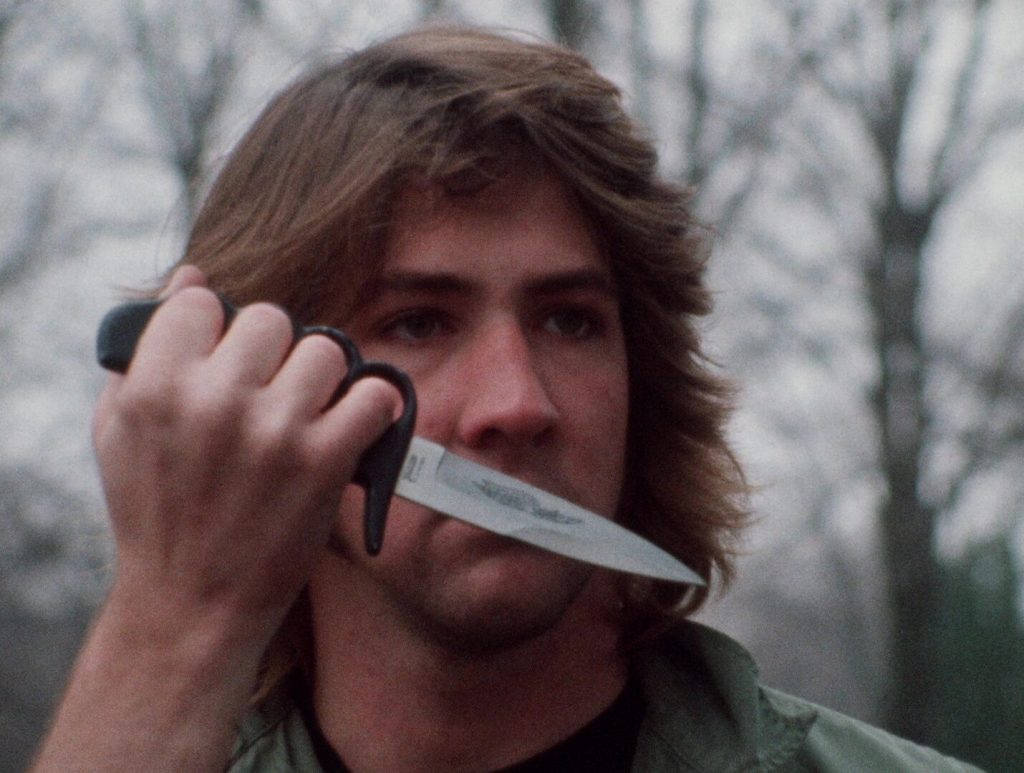
“Everything looks like MTV.” Cruising down a main strip in Los Angeles, the two teenage boys – Roy (Maxwell Caulfield, off the box office disappointment of Grease 2) and Bo (Charlie Sheen, pre-Platoon) – take the street scene all in with glee, yelling at the punks and catcalling the ladies. Director Penelope Spheeris, and her cinematographer Arthur Albert, capture the authenticity of the streets in The Boys Next Door (1985), and the night-time LA depicted is accentuated by a sickly green glow of the street lights and the pink-reddish glare of the neon signs. Out-of-towners who have recently graduated from high school, Roy and Bo, seem like a pair of regular guys: jeans and white t-shirts, drinking beers and chasing girls. Their interest in pranks and their snotty vibe have made them toxic to the rest of their high school. Roy, in particular, has some “stuff inside him”, he confides to Bo, and eventually that “stuff” comes out when he beats a petrol station attendant half-to-death. Recent graduates and bound for factory work, their impulsive jaunt to Los Angeles eventually becomes a nihilistic killing spree.
I’ve always been keen to see The Boys Next Door, a halfway point between Spheeris documentary The Decline Of Western Civilization and the comedy hit Wayne’s World, but not being a huge true crime fan (which I assumed it was; it’s not, a fictional story scripted by future X-Files writers Glen Morgan and James Wong), and knowing the darkness of this movie, I was reluctant to seek it out right away. I’m glad I watched it finally. Distributed by Roger Corman’s New World Pictures, and humming with a soundtrack of LA punk and proto-heavy metal, which often scores the disturbing violence, The Boys Next Door is a descent into meaningless murder and crime, with great lead performances from Caulfield and Sheen (his presence echoes his father’s film, Badlands). Kept tight to a 90 minute running time, and a slow escalation that is intercut with two detectives following the series of crimes (Hank Garrett and Christopher McDonald), it’s an unsettling movie that also captures 1980s L.A. nightlife. With Spheeris’ interest in punk rock and music, there’s a compelling theme where the boys find the punks weird and off-putting, and even a police detective rails against the way that punk girls are dressed, all part of the media panic about that subculture as violent and disturbed, when the real violence here is being perpetuated by a couple of good-looking “ordinary” boys. Available on Tubi. Recommended.



